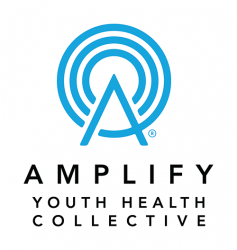Self-care is more than just bubble baths and facials; it is vital to our mental health and can include everyday activities, like walking and breathing. School staff can model healthy self-care and pass it along to their students. We will discuss what self-care can look like in your classroom both virtually and in-person.
Training Hub
The Sex Education Collaborative Training Hub lists trainings for sex educators, facilitators, and other professionals on best practices for sharing important information with clients and the public. From teaching anatomy inclusively to effectively addressing bias in the classroom to addressing racial justice and equity in sex education, the Training Hub includes trainings, technical assistance, and policy support from state, regional, and national leaders in the field of sex education.
Please note: The Training Hub includes both in-person and online professional trainings. If you see a training you are interested in and it isn’t listed as virtual, please reach out directly to any of our members to find out what's possible!
Trainings Offered by State-Based and National Organizations
Displaying results 36 - 40 of 137Self-Care in the Classroom
- Indicator 1 (K-12): Demonstrate three techniques to create an inclusive and affirming learning environment. (S)
- Indicator 3 (K-12): Describe three elements of a trauma-informed approach to sex education.
- Indicator 4 (K-12): Demonstrate three strategies of a trauma-informed approach to sex education (e.g. giving trigger warnings before content on sexual assault and allowing students the right to pass as appropriate, etc.). (S)
Coping Skills in the Classroom
Coping skills are strategies we use to manage unpleasant emotions, decrease stress, and establish order in our lives. They can be used in the classroom both by students and teachers. Participants will not only learn practical skills to use in their daily lives but also how to teach these skills to their students.
Sexual Violence in the Media
The media plays a huge role in how we think about sex and sexuality. Using TV clips, movie scenes, ads and songs, we will explore how the media portrays sexual violence. We will also discuss how we can use the media to have constructive conversations regarding sexual violence in our daily lives.
- Indicator 3 (K-12): Describe three strategies for teaching students communication skills.
- Indicator 4 (K-12): Describe three strategies for incorporating the positive and negative impacts of communicating through technology into lessons on healthy relationships.
Creating Safer Spaces in the Classroom
Each of us has experienced some type of trauma, whether it is collective trauma- like a natural disaster- or a personal trauma- like sexual abuse. In the classroom, trauma can show up in ways that look like behavior issues and actions that require discipline. Participants will learn small changes that can make a big difference in the classroom for students who have experienced trauma.
- Indicator 1 (K-12): Demonstrate three techniques to create an inclusive and affirming learning environment. (S)
- Indicator 3 (K-12): Describe three elements of a trauma-informed approach to sex education.
- Indicator 4 (K-12): Demonstrate three strategies of a trauma-informed approach to sex education (e.g. giving trigger warnings before content on sexual assault and allowing students the right to pass as appropriate, etc.). (S)
2SLGBTQ+ Inclusivity for Sex Educators
Health inequities persist for 2SLGBTQ+ young people both locally and nationally, particularly in relation to sexual and reproductive well-being. Most evidence-based sexual health education curricula address neither the information that directly applies to 2SLGBTQ+ youth nor best practices for truly engaging 2SLGBTQ+ youth in sex education. This training will equip educators with the tools to effectively neutralize their language, expand engagement strategies, and implement curricula adaptations to effectively serve LGBTQ+ youth. This training is intended for anyone implementing a sex education program with young people and the supervisors who support them.
- Indicator 1 (K-12): Demonstrate three techniques to create an inclusive and affirming learning environment. (S)
- Indicator 7 (K-12): Demonstrate the ability to analyze and tailor lesson plans to match the age, developmental stages, cultural backgrounds, and other identities of students. (S)
- Indicator 2 (K-12): Define sexual orientation and sexual identity, including that everyone has both.
- Indicator 3 (6-12): Explain the difference between sexual orientation, sexual behavior, and sexual identity.
- Indicator 4 (K-12): Demonstrate the use of inclusive and affirming language. (S)
- Indicator 5 (K-12): Demonstrate the ability to intervene effectively in homophobic and other bullying comments and actions. (S)
- Indicator 6 (K-12): Explain three ways that LGBQ+ youth are at disproportionate risk for health disparities.
- Indicator 7 (K-12): Identify three credible, medically accurate, youth-friendly resources that can provide information or support related to sexual orientation.
- Indicator 8 (K-12): Explain why it is essential to include positive portrayals of LGBQ+ people in lessons.
- Indicator 2 (K-12): Demonstrate the use of inclusive and affirming language. (S)
- Indicator 3 (K-12): Define gender identity and sex assigned at birth.
- Indicator 4 (K-12): Explain how gender identity and gender expression are distinct from each other and from sexual orientation.
- Indicator 5 (K-12): Demonstrate the ability to intervene effectively in transphobic, sexist, misogynistic and other gender-related bullying comments and actions. (S)
- Indicator 6 (K-12): Explain three ways that transgender and gender expansive youth are at disproportionate risk for health disparities.
- Indicator 7 (K-12): Identify three credible, medically accurate, youth-friendly resources that can provide information or support related to transgender and gender expansive people.
- Indicator 8 (K-12): Explain why it is essential to include positive portrayals of transgender and gender expansive people in lessons.
- Indicator 9 (K-12): Demonstrate three strategies that can be used to make lessons affirming for transgender and gender expansive people. (S)
Additional Trainings offered by out-of-state organizations
- ‹ previous
- 45 of 49
- next ›
Trauma-Informed Sexual Health Education
We never know what traumas someone has experienced or what could trigger a trauma response for someone. As more and more research has come to show that many young people are experiencing high levels of trauma, it's essential that we work to create safer spaces for young people in schools. This includes ensuring that sex education will not become a re-traumatizing experience for survivors.This training will cover the basics of trauma, small “t” vs. big “T” trauma, and how Adverse Childhood Experiences (ACEs) can play a part in sex education.
- Indicator 1 (K-12): Demonstrate three techniques to create an inclusive and affirming learning environment. (S)
- Indicator 2 (K-12): Demonstrate three strategies for creating culturally responsive classrooms. (S)
- Indicator 3 (K-12): Describe three elements of a trauma-informed approach to sex education.
- Indicator 4 (K-12): Demonstrate three strategies of a trauma-informed approach to sex education (e.g. giving trigger warnings before content on sexual assault and allowing students the right to pass as appropriate, etc.). (S)
- Indicator 4 (K-12): Explain the roles and responsibilities of a mandated reporter.
- Indicator 5 (K-12): Explain the state- and district-mandated reporting requirements and procedures.
- Indicator 3 (K-12): Explain the differences between positive vs. shaming approaches to teaching sex education.
- Indicator 7 (K-12): Demonstrate the ability to analyze and tailor lesson plans to match the age, developmental stages, cultural backgrounds, and other identities of students. (S)
- Indicator 4 (K-12): Describe three strategies for incorporating the positive and negative impacts of communicating through technology into lessons on healthy relationships.
- Indicator 4 (K-12): Demonstrate the use of inclusive and affirming language. (S)
- Indicator 6 (K-12): Explain three ways that LGBQ+ youth are at disproportionate risk for health disparities.
- Indicator 8 (K-12): Explain why it is essential to include positive portrayals of LGBQ+ people in lessons.
- Indicator 2 (K-12): Describe state and/or district laws, policies, and standards that relate to sex education where one teaches.
- Indicator 2 (K-12): Describe how verbal and nonverbal expression of personal values, and comfort with topics related to sex education, could impact one’s teaching
- Indicator 3 (K-12): Explain the importance of educators refraining from sharing their personal values when implementing sex education.


